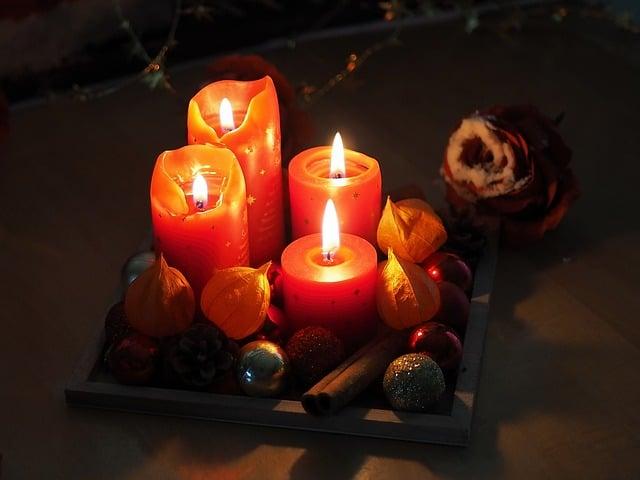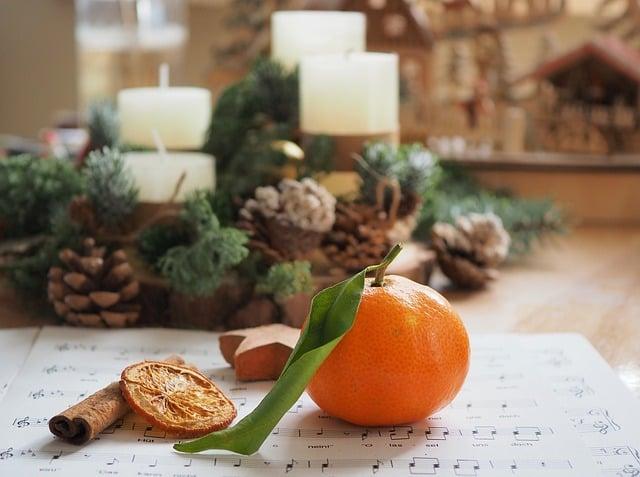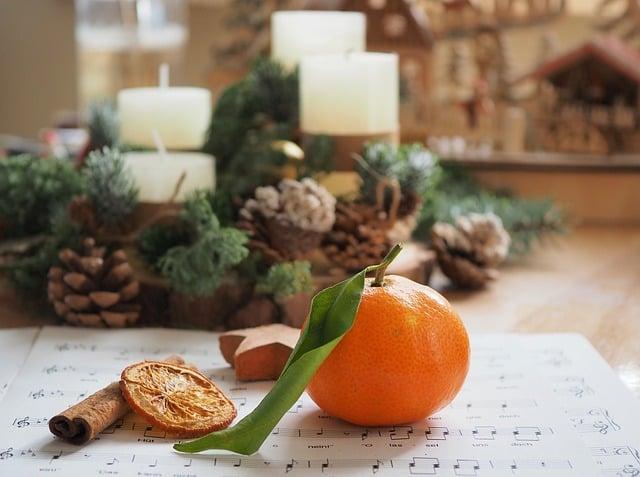In a quaint village, nestled between snow-capped mountains, the townsfolk gathered each year to celebrate Advent. As the first candle flickered to life, a hush fell over the crowd. They shared stories of hope and anticipation, each flame symbolizing a week of preparation for the joyous arrival of Christmas. Children crafted handmade ornaments, while elders recounted tales of love and light. This sacred countdown reminded them to pause amidst the holiday rush, embracing the spirit of giving and reflection, ensuring that when Christmas finally arrived, their hearts were ready to celebrate.
Table of Contents
- Understanding the Origins of Advent and Its Significance
- The Spiritual Journey: Preparing Hearts for the Christmas Season
- Traditions and Practices: How Different Cultures Celebrate Advent
- Embracing Advent: Practical Tips for a Meaningful Celebration
- Q&A

Understanding the Origins of Advent and Its Significance
Advent, a season rich in tradition and meaning, traces its origins back to the early Christian church, where it was established as a time of preparation for the celebration of Christ’s birth. Initially observed as a period of fasting and penance, it evolved over the centuries into a more reflective and hopeful time. The word “Advent” itself comes from the Latin “adventus,” meaning “coming,” which signifies the anticipation of both the Nativity of Jesus and His eventual second coming. This dual focus invites believers to engage in a deeper spiritual journey, fostering a sense of readiness and expectation.
The significance of Advent lies not only in its historical roots but also in its ability to cultivate a spirit of hope and renewal. As families light candles on their Advent wreaths, they symbolize the light of Christ entering the world, dispelling darkness and despair. The themes of **hope**, **peace**, **joy**, and **love** are woven throughout this season, encouraging individuals to reflect on their faith and the transformative power of Christ’s message. By embracing the practices of prayer, reflection, and community, Advent serves as a vital reminder of the importance of preparation—both for the joyous celebration of Christmas and for the ongoing journey of faith in everyday life.

The Spiritual Journey: Preparing Hearts for the Christmas Season
As the days grow shorter and the air turns crisp, many find themselves drawn into a season of reflection and anticipation. Advent serves as a sacred time to prepare our hearts for the joyous celebration of Christmas. This period, spanning four weeks, invites us to pause amidst the hustle and bustle of holiday preparations and to engage in a deeper spiritual practice. It is a time to cultivate **hope**, **peace**, **joy**, and **love**, allowing these virtues to blossom within us as we await the arrival of the Christ child. Through prayer, contemplation, and community, we can create a space for spiritual renewal that enriches our experience of the season.
During Advent, we are encouraged to embrace various traditions that enhance our spiritual journey. These may include:
- Lighting Advent candles: Each candle represents a different theme, illuminating our path as we reflect on the significance of each week.
- Daily devotionals: Engaging with scripture and meditative readings helps us connect with the essence of the season.
- Acts of kindness: Fostering a spirit of generosity through service to others can deepen our understanding of love and compassion.
By intentionally participating in these practices, we not only prepare ourselves for the celebration of Christmas but also nurture a sense of community and shared purpose. Advent becomes a transformative journey, guiding us to a place of inner peace and readiness to embrace the joy of the holiday season.

Traditions and Practices: How Different Cultures Celebrate Advent
Across the globe, the anticipation of Christmas is marked by unique traditions and practices that vary from culture to culture. In many European countries, such as Germany and Austria, Advent is celebrated with the lighting of candles on an Advent wreath. Each Sunday leading up to Christmas, a new candle is lit, symbolizing hope and the gradual approach of the holiday. In contrast, in Latin American countries, the tradition of “Las Posadas” takes center stage, where communities reenact Mary and Joseph’s search for shelter. This nine-day celebration involves singing, prayers, and festive gatherings, culminating in joyous festivities on Christmas Eve.
In the United States, Advent calendars have become a popular way to count down the days until Christmas, with each day revealing a small gift or a piece of chocolate. Meanwhile, in the Philippines, the “Simbang Gabi” tradition involves attending early morning Masses for nine consecutive days leading up to Christmas, fostering a sense of community and spiritual preparation. Other cultures, such as the Orthodox Christians, observe Advent with a period of fasting and reflection, emphasizing the spiritual significance of the season. These diverse practices highlight the rich tapestry of customs that bring people together in celebration and anticipation of Christmas.

Embracing Advent: Practical Tips for a Meaningful Celebration
As the season of Advent approaches, it offers a unique opportunity to cultivate a spirit of anticipation and reflection. To make the most of this sacred time, consider incorporating **daily rituals** that foster mindfulness and connection. You might start each day with a moment of silence or prayer, allowing yourself to center your thoughts on the true meaning of the season. Creating an Advent calendar filled with **thoughtful activities**—such as reading a passage from scripture, performing an act of kindness, or sharing a family meal—can also enhance your experience. This not only builds excitement for Christmas but also deepens your understanding of the themes of hope, peace, joy, and love that Advent embodies.
Another way to embrace this season is by engaging in **community activities** that reflect the spirit of giving and togetherness. Consider organizing or participating in a local charity drive, volunteering at a shelter, or hosting a gathering with friends and family to share stories and traditions. You can also create a cozy atmosphere at home by decorating with symbols of Advent, such as an Advent wreath or candles, which serve as visual reminders of the light that is to come. By focusing on these practices, you can transform the hustle and bustle of the holiday season into a meaningful journey of preparation and reflection, allowing you to fully appreciate the joy of Christmas when it arrives.
Q&A
-
What is Advent?
Advent is a season in the Christian calendar that marks the period of preparation for the celebration of the birth of Jesus Christ at Christmas. It typically lasts for four weeks, beginning on the fourth Sunday before Christmas Day.
-
Why do we celebrate Advent?
We celebrate Advent to reflect on the anticipation and hope surrounding the coming of Christ. It serves as a time for spiritual preparation, allowing individuals and communities to focus on themes of hope, peace, joy, and love.
-
How is Advent observed?
Advent is observed in various ways, including:
- Lighting candles on an Advent wreath, with each candle representing a week of Advent.
- Using Advent calendars to count down the days until Christmas.
- Participating in special church services and prayers.
-
What is the significance of the Advent season?
The significance of Advent lies in its dual focus: it commemorates the first coming of Christ while also looking forward to His second coming. This duality encourages believers to live in a state of readiness and hope.
As the season of Advent unfolds, we embrace a time of reflection and anticipation. This cherished tradition invites us to pause, prepare, and open our hearts to the joy of Christmas, reminding us that the journey is just as meaningful as the destination.

大家好,我是彼得潘,專業的手法身體治療師。我喜歡探索和研究各種主題,並透過與人工智慧的合作分享專業、實用、有趣的文章。我們定期進行人工審核,以確保內容的準確性。如果您發現文章中有任何不準確的地方,請隨時與我們聯繫,我們會及時糾正。您可以透過 [email protected] 與我們聯繫。



